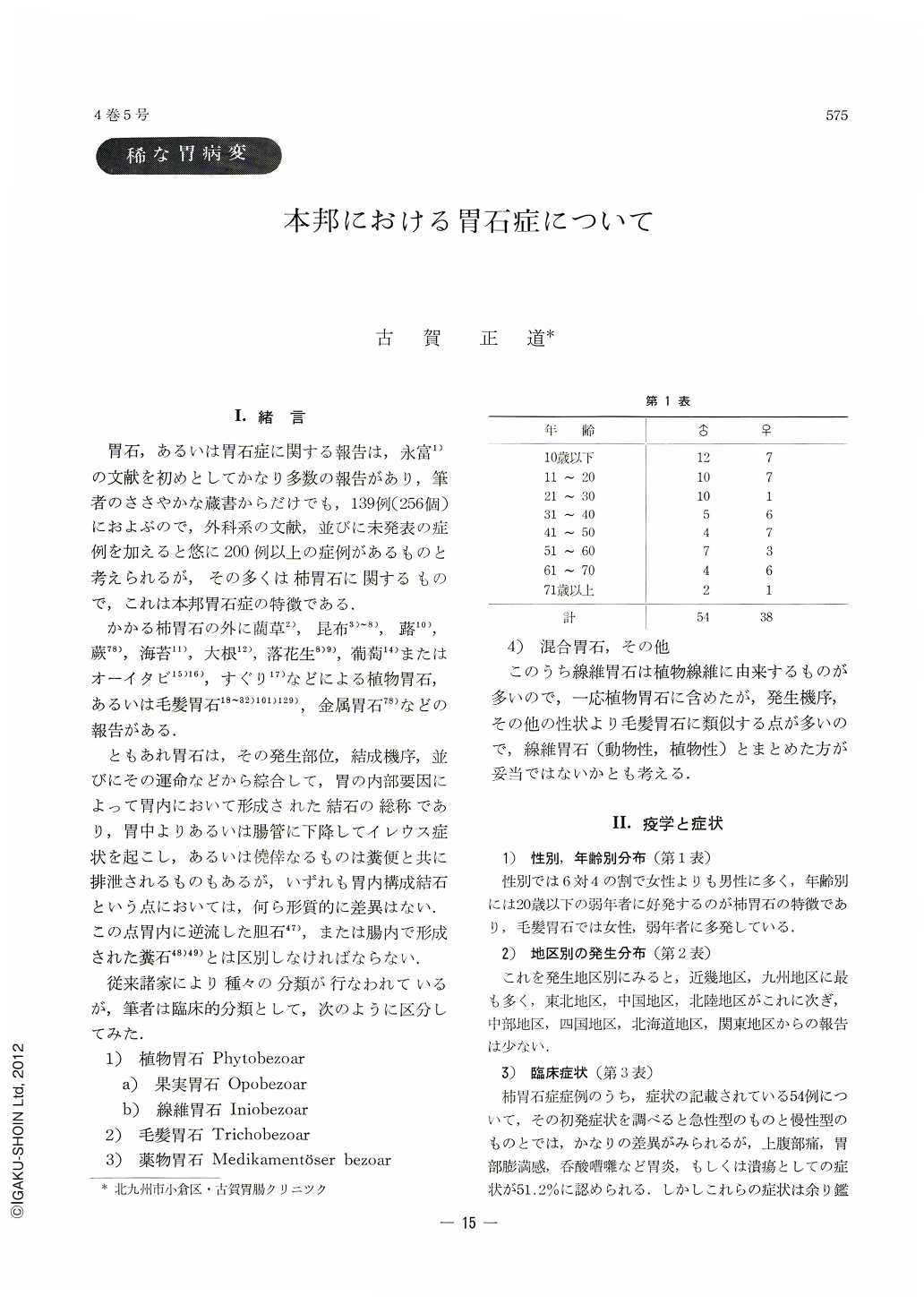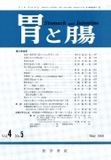Japanese
English
- 有料閲覧
- Abstract 文献概要
- 1ページ目 Look Inside
Ⅰ.緒言
胃石,あるいは胃石症に関する報告は,永富1)の文献を初めとしてかなり多数の報告があり,筆者のささやかな蔵書からだけでも,139例(256個)におよぶので,外科系の文献,並びに未発表の症例を加えると悠に200例以上の症例があるものと考えられるが,その多くは柿胃石に関するもので,これは本邦胃石症の特徴である.
かかる柿胃石の外に藺草2),昆布3)~8),蕗10),蕨78),海苔11),大根12),落花生8)9),葡萄14)またはオーイタビ15)16),すぐり17)などによる植物胃石,あるいは毛髪胃石18)~32)101)129),金属胃石78)などの
報告がある.
Kernels of astringent persimmons mostly account for formation of bezoars in this country. In a small percentage are bezoars caused by such variuos substances as rush, tang, bracken, laver, grape, oitabi and so on.
Bezoars are found either in the stomach or in the small intestine, but bezoar in its real sense of the Word should be defined as a gastrolith formed originally inside the gastric lumen due to some factors inherent in the stomach, to be strictly discriminated from a fecal stone, formed in the intestine or caused by a gallstone regurgitated into the stomach.
According to an epidemiological investigation of 256 bezoars in 139 cases, collected from the literature on this subject, bezoars favor younger people, opobezoars being more numerous among men and trichobezoars more frequent among women.
Their incidence in regional distribution shows that they are more often found in Kansai, Kyushu and Tohoku areas, probably due to the fact that these are noted for their production of persimmons and for their rich harvest.
Clinical manifestation of bezoars often begins with such acute symptoms as severe epigastralgia, vomiting and diarrhea. If the onset of symptoms is insidious, difiiculty is often encountered in discriminating them from those of gastritis or stomach ulcer.
Bezoars are varied in size, but mostly they are about the size of an egg of hen or goose. Eighty per cent of them are solitary. Sometimes several, at times more than five bezoars are found in one stomach. Some of them weigh more than 300 gr. Acidity of gastric juice has been considered as of great account in the making of persimmon bezoar, as verified experimentally by its ready formation in artificial gastric juice of high acidity. Clinically, however, factors other than acidity must be taken into account, since bezoars are observed in hypoacidic, or even anacidic stomach as well as in the gastric remnant after gastrectomy.
The diagnosis of bezoar of the stomach can be made with ease, if a freely movable shadow defect is demonstrated by x-ray, besides a previous history of overeating of persimmons accompanied by its specific clinical symptoms. If a bezoar attains a giant size, it must be dislocated from the gastric wall so as to demonstrate no rigidity of the wall, and reticular pattern inside the filling defect must also be visualized. Endoscopic cobservation will further corroborate its existence.
Should pyloric or intestinal obstruction be impending, laparotomy becomes urgent. Otherwise, more active approach in its internal management is required by means of gastrolithilysis or gastro lithotripsy through gastrofiberscope for direct vision biopsy.

Copyright © 1969, Igaku-Shoin Ltd. All rights reserved.


